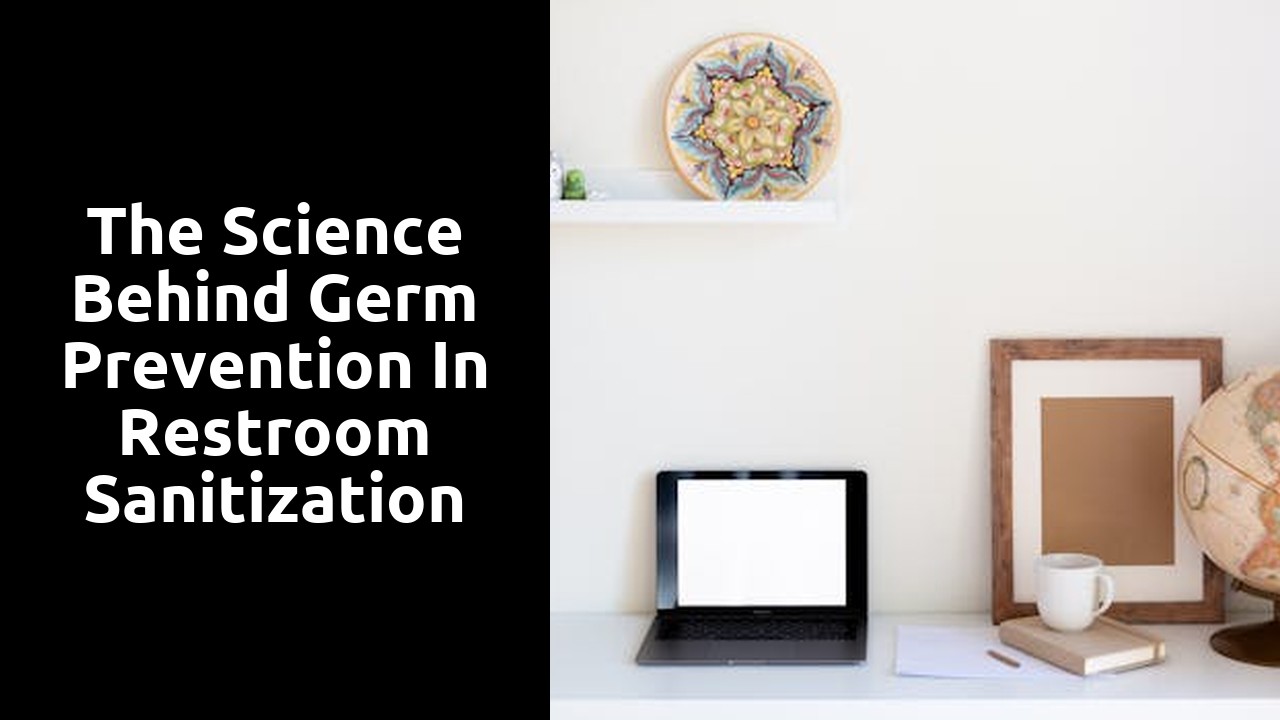The Science Behind Germ Prevention in Restroom Sanitization

Table Of Contents
Benefits of Touchless Restroom Fixtures
Touchless restroom fixtures offer a range of benefits for both users and facility managers. By eliminating the need for physical contact, these fixtures help reduce the spread of germs and bacteria in high-traffic areas like public restrooms. This not only contributes to a cleaner and more hygienic environment but also enhances the overall user experience by promoting a sense of safety and well-being.
Furthermore, touchless fixtures can lead to cost savings in the long run. With fewer physical touchpoints, there is less wear and tear on fixtures, reducing the need for frequent maintenance and replacement. Additionally, by conserving water and other resources through sensor-activated systems, touchless fixtures contribute to a more sustainable and eco-friendly restroom design.
Enhancing Hygiene Practices Through SensorActivated Systems
Sensor-activated systems play a crucial role in enhancing hygiene practices in restrooms. By eliminating the need for physical contact with surfaces, these systems significantly reduce the transfer of harmful germs and bacteria. The use of sensors to control fixtures such as soap dispensers, taps, and hand dryers ensures that users can maintain hand hygiene without having to touch potentially contaminated surfaces, thus minimizing the risk of cross-contamination.
In addition to promoting cleanliness, sensor-activated systems also contribute to a more efficient and sustainable restroom environment. By delivering exact amounts of soap, water, and paper towels, these systems help to reduce unnecessary waste and conserve resources. The automated operation of restroom fixtures not only ensures a more hygienic experience for users but also supports eco-friendly practices within public facilities.
Role of Cleaning Protocols in Infection Control
Maintaining stringent cleaning protocols is paramount in the battle against harmful germs and pathogens in restroom facilities. The careful selection and application of cleaning agents can significantly reduce the risk of infections spreading amongst users. By adhering to rigorous cleaning schedules, facilities can uphold high standards of hygiene, creating a safer environment for all visitors. Consistently sanitising high-touch surfaces, such as door handles, faucets, and toilet seats, is vital in preventing the transmission of harmful bacteria and viruses.
Furthermore, the implementation of thorough cleaning procedures not only removes visible dirt and grime but also targets microscopic organisms that may linger on surfaces. Utilising effective disinfectants with proven antibacterial properties is imperative in eradicating harmful pathogens. Regular training of cleaning staff on proper techniques and the correct usage of cleaning products is essential to ensure that all areas are sanitised effectively, contributing to the overall health and well-being of restroom users.
Implementing Effective Cleaning Schedules for Maximum Protection
Effective cleaning schedules play a vital role in maintaining a hygienic environment within restrooms. By adhering to a well-planned cleaning routine, facilities can significantly reduce the spread of harmful germs and bacteria. Regular cleaning not only ensures a visually appealing restroom but also contributes to the overall health and safety of users.
Implementing a systematic approach to cleaning, which includes a thorough disinfection of commonly touched surfaces, can help in preventing the transmission of infectious diseases. By carefully scheduling cleaning tasks and using appropriate cleaning agents, restroom managers can create a sanitary space that promotes well-being. Consistency is key when it comes to cleaning schedules, as regularity in maintenance routines can effectively combat the proliferation of germs within restroom facilities.
The Science of Antimicrobial Surfaces
Antimicrobial surfaces have revolutionized the way we approach infection control in various settings, particularly in high-traffic areas like restrooms. The science behind these surfaces lies in their ability to inhibit the growth and spread of bacteria, ultimately reducing the risk of cross-contamination. By incorporating antimicrobial coatings into commonly touched surfaces such as door handles, faucet handles, and countertops, facilities can create a more hygienic environment for users.
These surfaces are engineered to release antimicrobial agents that target and disrupt the cell walls of bacteria upon contact, preventing their growth and multiplication. This mechanism of action not only helps to combat the spread of harmful pathogens but also prolongs the cleanliness and sanitation of restroom facilities between regular cleaning intervals. With the increasing focus on health and hygiene, antimicrobial surfaces are becoming essential components of effective restroom sanitization practices.
Understanding How Antimicrobial Coatings Inhibit Bacterial Growth
Antimicrobial coatings play a crucial role in inhibiting bacterial growth on various surfaces within restroom facilities. By incorporating these coatings into fixtures and touchpoints, the spread of harmful pathogens can be significantly reduced, contributing to a cleaner and safer environment for users. The science behind these coatings lies in their ability to disrupt the cellular structure of bacteria upon contact, thereby preventing their proliferation and survival on surfaces.
Through the use of antimicrobial coatings, restroom facility managers can create an additional layer of protection against bacterial contamination. By implementing these coatings on commonly touched surfaces such as door handles, faucets, and toilet flush handles, the risk of cross-contamination between users is minimised. This proactive approach to sanitation not only enhances the overall cleanliness of the facility but also underscores the commitment to maintaining high hygiene standards for public health and well-being.
FAQS
How can touchless restroom fixtures benefit germ prevention?
Touchless restroom fixtures help reduce the spread of germs by minimizing contact with surfaces that may harbour bacteria and viruses.
How do sensor-activated systems enhance hygiene practices in restrooms?
Sensor-activated systems promote better hygiene by allowing users to operate restroom fixtures without touching them, reducing the risk of cross-contamination.
What is the role of cleaning protocols in infection control?
Office Cleaning Services Edinburgh
Office Cleaning Services Edinburgh